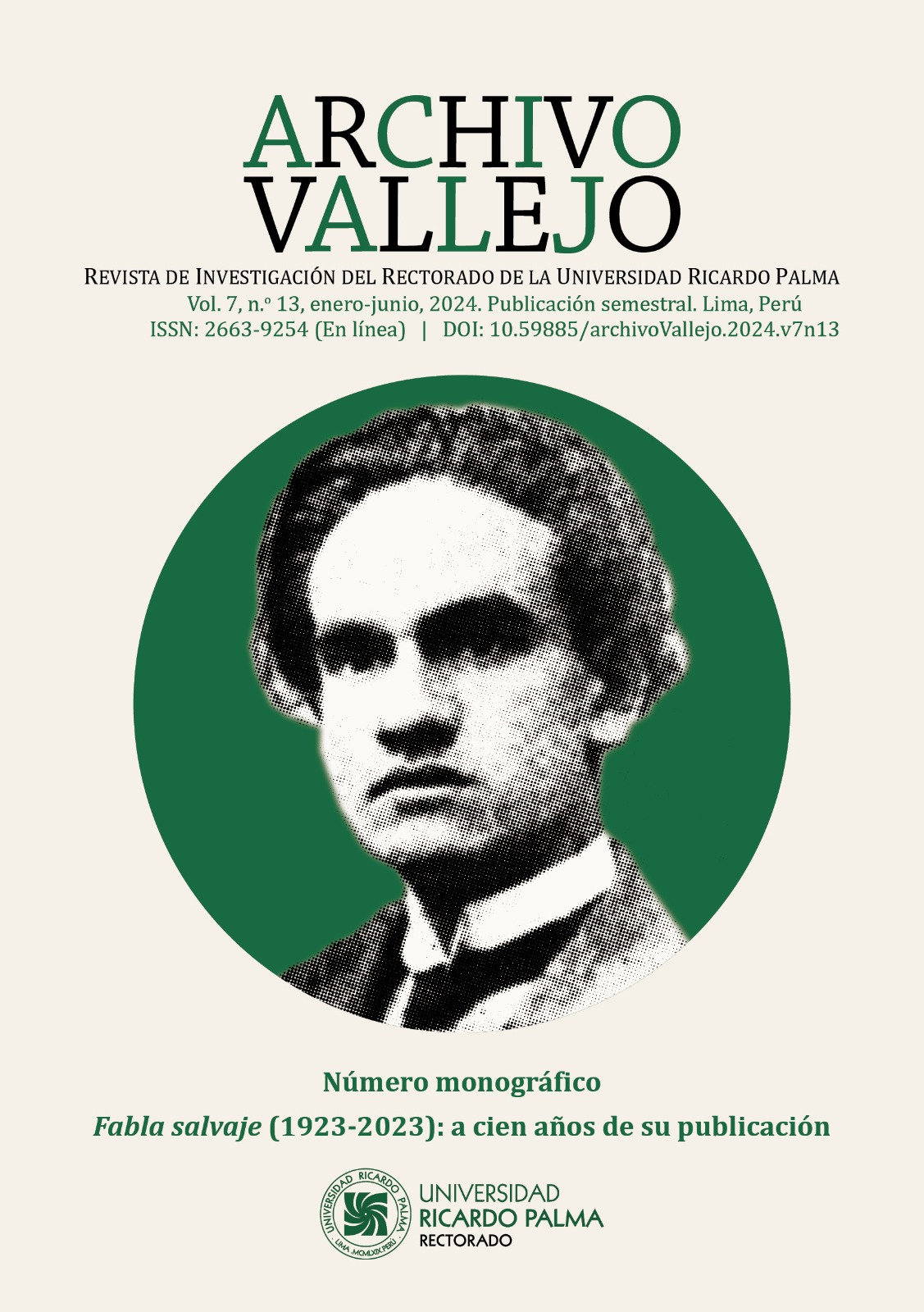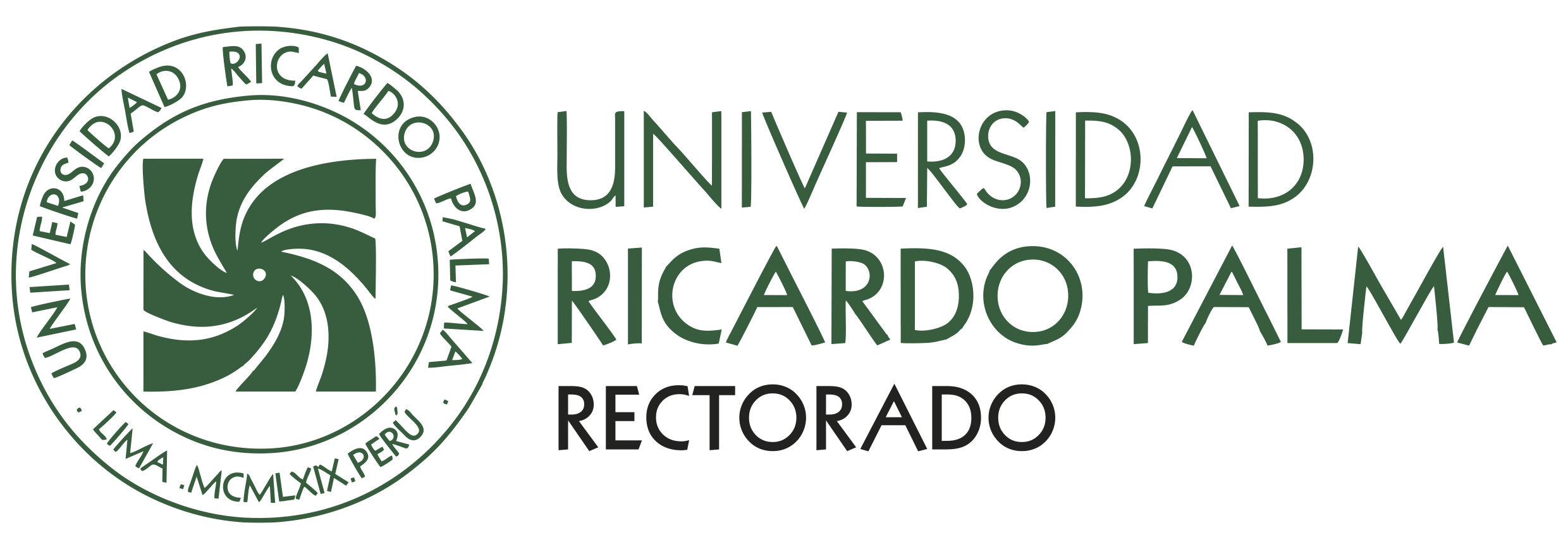La novela modernista hispanoamericana: representaciones fantasmagóricas en Fabla salvaje de César Vallejo
DOI:
https://doi.org/10.59885/archivoVallejo.2024.v7n13.07Palabras clave:
modernismo, decadentismo, maldad, perversión, soledadResumen
En el presente artículo se pretende analizar y explicar, a partir de la novela breve de César Vallejo, Fabla salvaje, cómo se construyen y desarrollan las representaciones fantasmagóricas en las que están envueltos los personajes, seres y ambientes de la narración. Asimismo, para este fin, es necesario reconocer y partir de la idea central que señala que esta novela está inscrita dentro de los cánones del movimiento modernista en su versión de la narrativa decadentista, donde el hombre y su condición individual y cultural están condenados a la miseria, a la destrucción moral y espiritual y al aniquilamiento de las instituciones tradicionales que este movimiento representa, como el amor y la fidelidad. El análisis literario utilizará, por un lado, categorías narratológicas y hermenéuticas que parten del reconocimiento de los elementos textuales, como el narrador, el espacio, el tiempo y el sentido global del texto; y por otro, empleará categorías propias del decadentismo literario desarrolladas por Gabriela Mora.
Citas
Anderson, E. (1995). Historia de la literatura hispanoamericana I. La colonia. Cien años de república. Fondo de Cultura Económica.
Baudelaire, C. (2012). Dibujos y fragmentos póstumos. Editorial Sexto Piso.
Henríquez, M. (1962). Breve historia del modernismo. Fondo de Cultura Económica.
Mora, G. (1996). El cuento modernista hispanoamericano. Manuel Gutiérrez Nájera, Rubén Darío, Leopoldo Lugones, Manuel Díaz Rodríguez, Clemente Palma. Latinoamericana Editores.
Oviedo, M. (2012). Historia de la literatura hispanoamericana. 2. Del Romanticismo al modernismo. Alianza Editorial.
Pérus, F. (1976). Literatura y sociedad en América Latina: el modernismo. Casa de las Américas.
Rama, Á. (1970). Rubén Darío y el modernismo (circunstancia socioeconómica de un arte americano). Biblioteca de la Universidad Central de Venezuela.
Ricoeur, P. (2011). Teoría de la interpretación. Discurso y excedente de sentido. Siglo Veintiuno Editores.
Roas, D. (2019). Tras los límites de lo real. Una definición de lo fantástico. Páginas de Espuma.
Salinas, P. (2005). La poesía de Rubén Darío. Ensayo sobre el tema y los temas del poeta. Península.
Seagram’s España (2019, 12 de julio). Cap. 1 - ¿Quién dice la verdad? Con Antonio Escohotado y Marta Peirano [entrevista/video]. YouTube. https://www.youtube.com/watch?v=XjMKV_mYRmg
Tamayo, A. (1976). Literatura peruana. Librería Studium Editores.
Vallejo, C. (2005). Fabla salvaje. En Narrativa y ensayos. Antología (pp. 37¬60). El Comercio.
Publicado
Cómo citar
Número
Sección
Licencia
Derechos de autor 2024 Kent Wilander Oré de la Cruz

Esta obra está bajo una licencia internacional Creative Commons Atribución 4.0.
Los contenidos publicados en la revista están bajo una licencia CC-BY 4.0, la cual permite:
- Compartir, copiar y redistribuir el material en cualquier medio o formato.
- Adaptar, remezclar, transformar y construir a partir del material para cualquier propósito, incluso comercialmente.
Bajo los siguientes términos:
- Atribución. Usted debe dar crédito de manera adecuada, brindar un enlace a la licencia, e indicar si se han realizado cambios. Puede hacerlo en cualquier forma razonable, pero no de forma tal que sugiera que usted o su uso tienen el apoyo de la licenciante.















